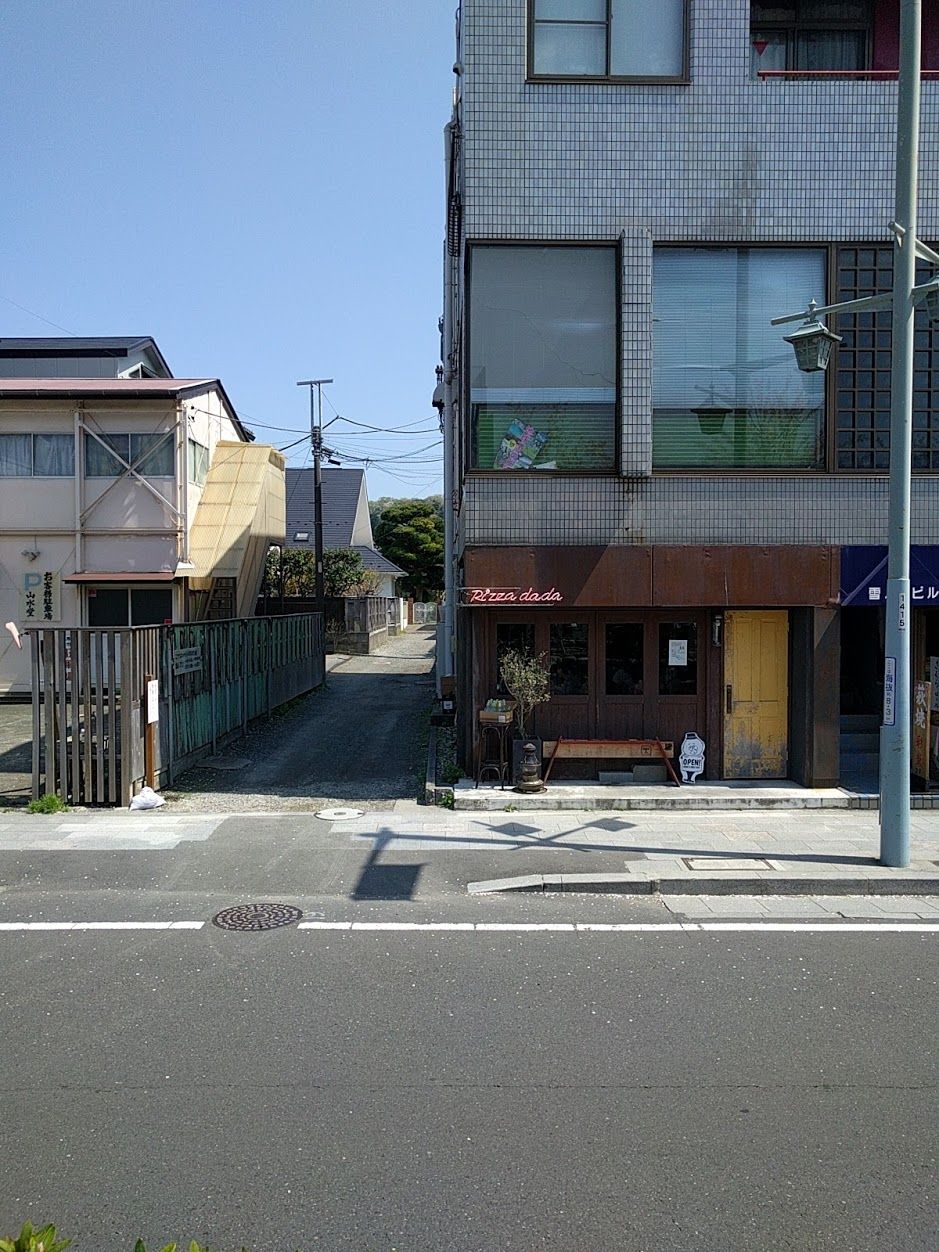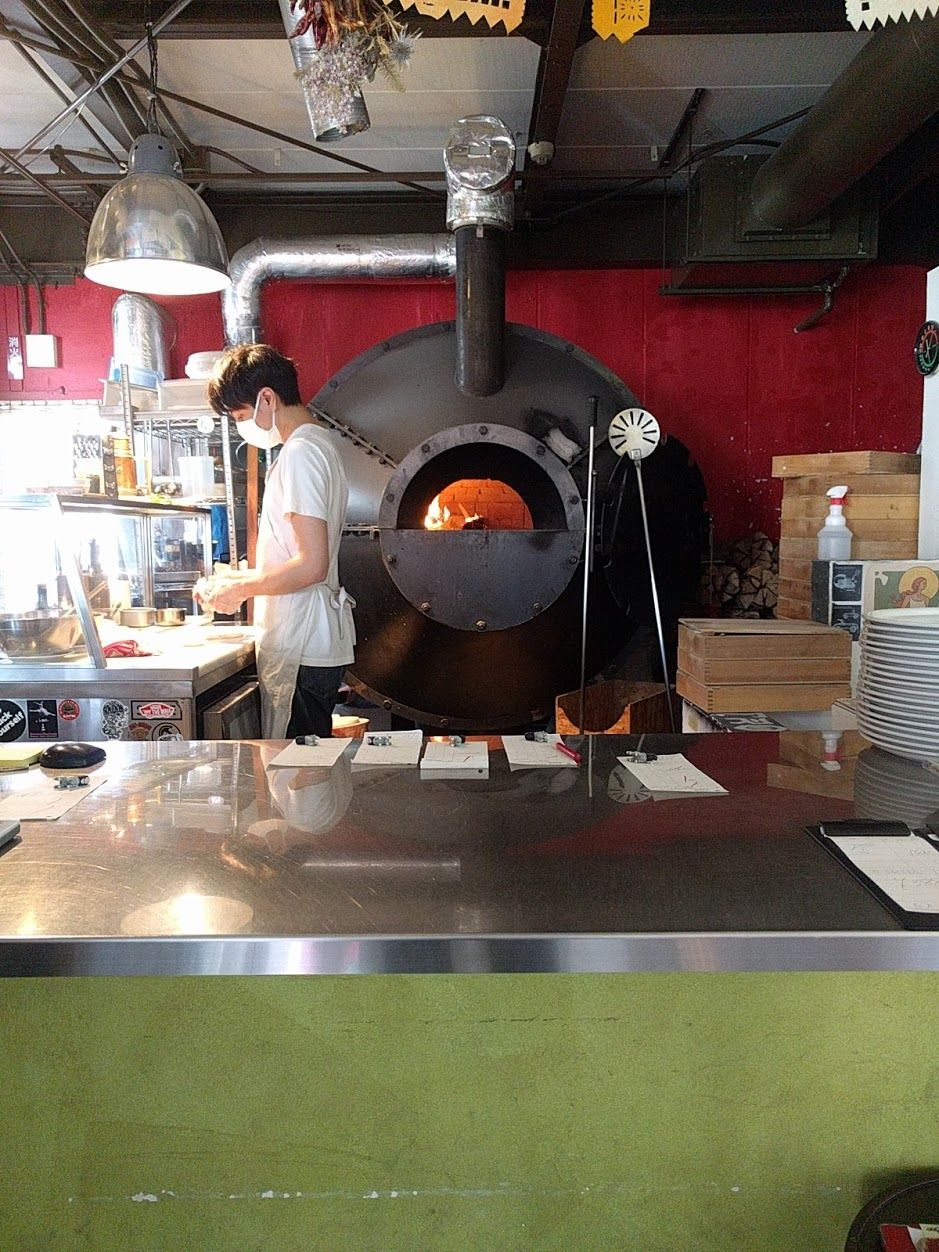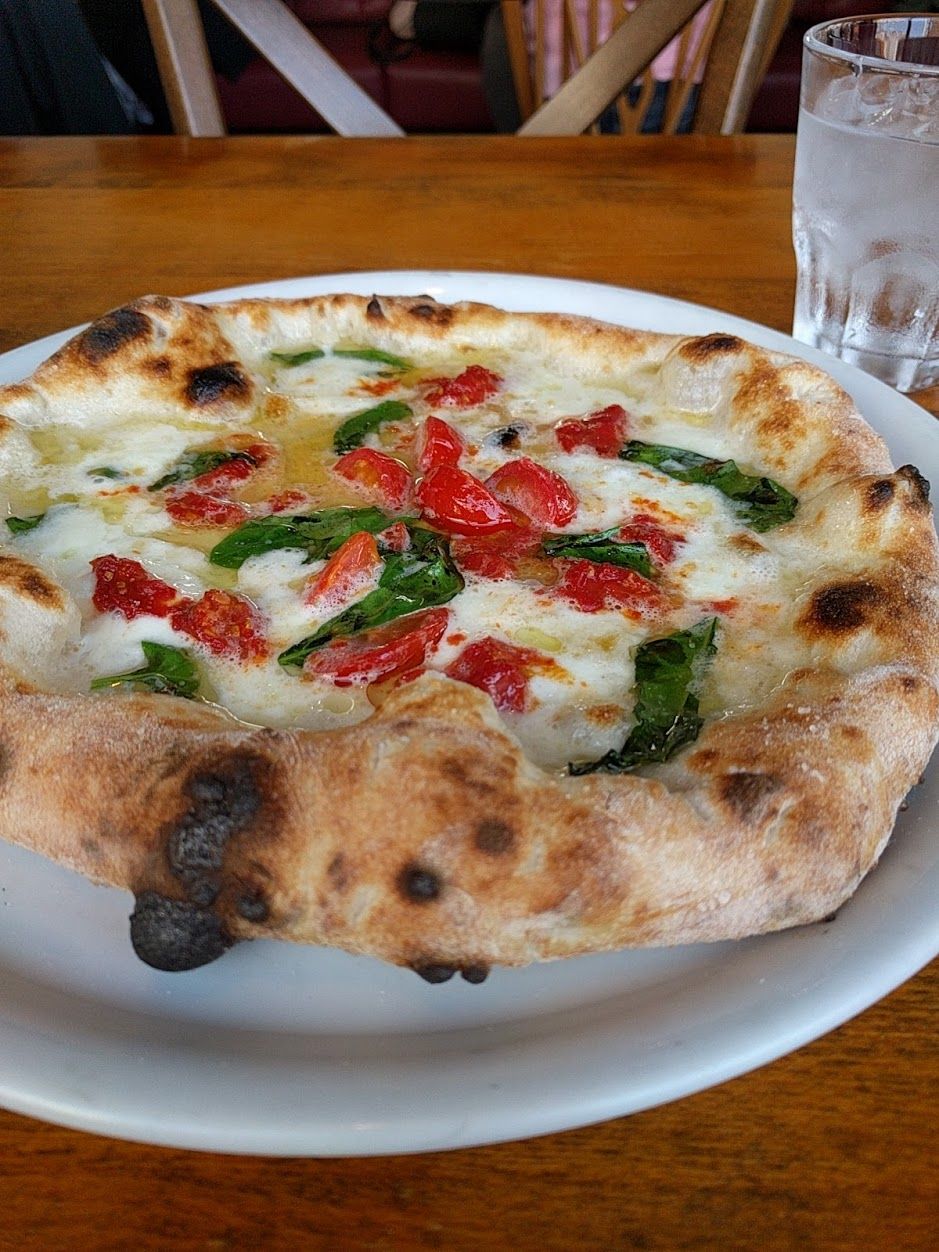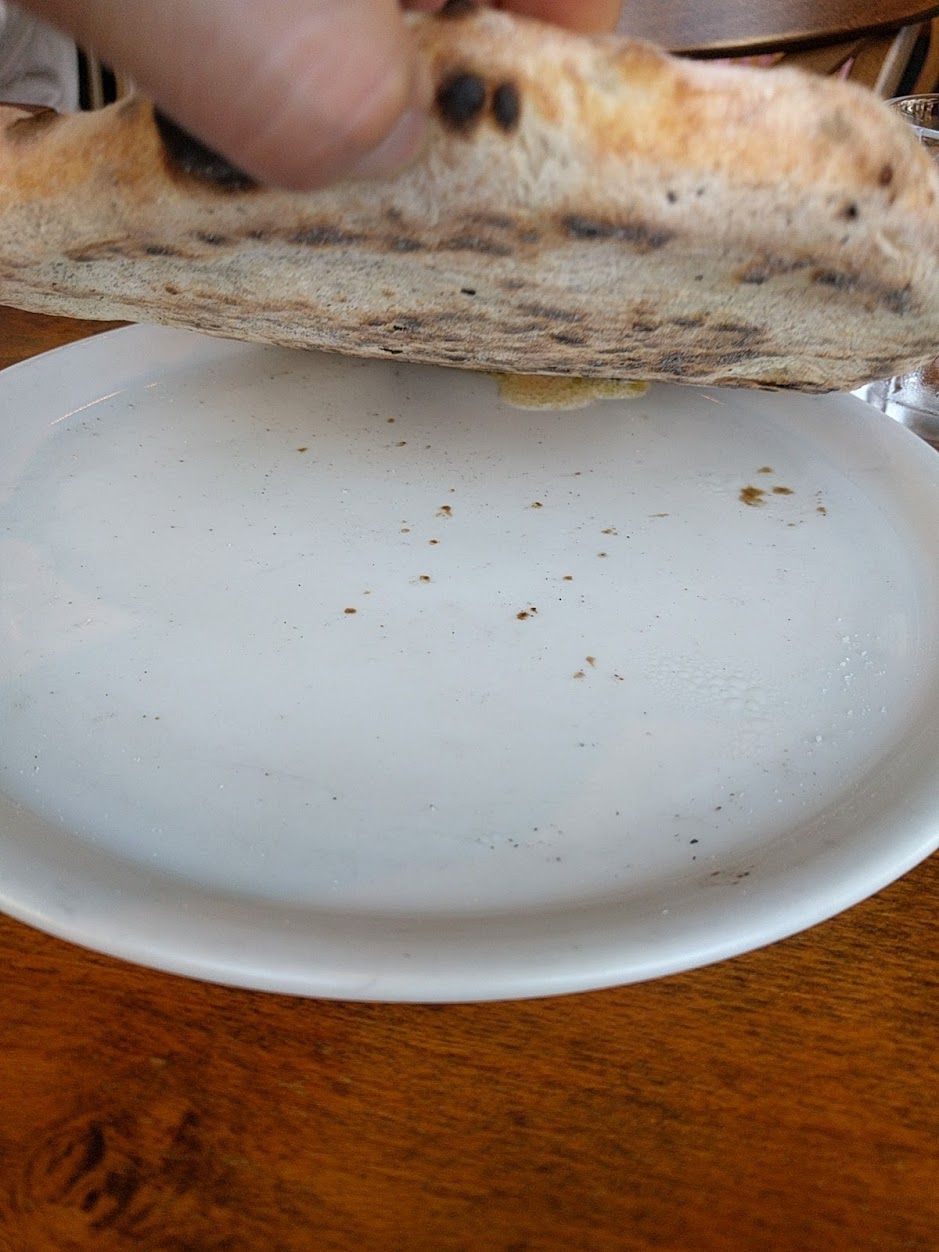Pizza tradeoffs
11/9/2019 ☼ Quality ☼ Food ☼ Pizza ☼ Japan ☼ Travel ☼ Innovation
 After selling out of pizza.
After selling out of pizza.
Like many people, I’ll eat bad pizza and enjoy it. But I love great pizza and have hunted it in many countries. Until March 15, 2018, the best pizza I’d ever had was from Pizza Dada in Japan. On April 14, 2017, I took a slow train from Shibuya to the scenic temple town of Kamakura, walked down a promenade of flowering cherries to Dada, and lined up with 18 other people outside the shop. 14 more showed up by the time the door opened for lunch about 20 minutes later. Almost immediately after I was seated, my pizza order went in. The shaping was meticulous, the wood oven carefully fired. When it arrived a few minutes later, it was a great Nippolitan-style pizza—that is to say, a Neapolitan-style pizza refracted through the lens of a Japanese pizza sensibility. (This is a term of my own invention.)
 Only the principal may touch the dough. This is a principle some prominent pizzaioli with operations in New York City might do well to bear in mind.
Only the principal may touch the dough. This is a principle some prominent pizzaioli with operations in New York City might do well to bear in mind.
The Neapolitan standard for a pizza appears to be hegemonizing our understanding of what greatness means in pizza, at least outside the US. The standard prizes, among other things, a pizza with a tremendously aerated and blistered crust that is nonetheless just barely cooked within, and toppings that are heated through but have not been subjected to prolonged cooking. The center of the Neapolitan-style pizza is therefore often very moist or—if we are blunt—soupy. Preparation of a fragile dough using the right flour and prolonged cool fermentation, delicate and swift stretching, shaping, and topping to achieve a very thin center balanced by a rim of appropriate thickness and volume, followed by cooking in an enormously hot oven for under two minutes. There are many points of failure in the process of producing a Neapolitan-style pizza. The success of the final cooking depends on firing the oven to the correct floor and chamber temperatures, then loading and rotating the pizza to achieve even cooking, all within a very small time window. If these stars all align, the Neapolitan-style pizza can be incredibly delicious for the few seconds after it emerges leopard-spotted from the oven as the pressure of steam in the base momentarily holds the moisture in the topping at bay. A great Neapolitan-style pizza temporarily achieves a seemingly paradoxical state of being dry and wet, soft and crunchy, crisp and tender, all at once.
But this phase of deliciousness passes all too soon: Even the most perfect Neapolitan-style pizza is transformed as it cools and saturates. Sooner or later—almost always literally in seconds—it is a limp disc that can only approached with a knife and fork. When transformed to soup, the pizzaiolo’s skill (or lack thereof) in stretching the center thinly and evenly becomes painfully evident. Though the Association for the True Neapolitan Pizza presents the luscious, “umido” center as a plus, a full and frank assessment must concede that it is trying to make lemonade from lemons. In fact, it is a bug, not a feature. The lush center is no more than the inevitable consequence of the abundant crust aeration and high-contrast blistering that is the real mark, objective, and prize of Neapolitan-style pizza. To achieve that, very wet doughs, extreme temperatures, and short cook times are essential—and the tradeoff is that neither base nor topping can ever cook enough to dehydrate sufficiently to be robust. I do not like a soupy pizza.
Unlike the pizzas I had earlier that week in Tokyo at Seirinkan and Pizza Studio Tamaki (both nerd-famous Nippolitan pizzerias turning out beautiful pizzas that souped in seconds), the Pizza Dada pizza had a thoroughly aerated crust that was crunchy, chewy, and tender, and a center moist and lush but retaining enough structure to remain in its phase of deliciousness for almost two minutes—by which time I had eaten nearly all of it.
 Blistering, aeration, and a moist center …
Blistering, aeration, and a moist center …
 … but with a properly cooked, structurally sound base.
… but with a properly cooked, structurally sound base.
A great Neapolitan-style pizza is a work of art for a moment. There is something fine about aiming for a standard that relies so much on diligent preparation and the willingness to embrace the grace of the moment to achieve transient transcendence. One can, if practiced, engulf it in that moment before it turns into soup. But a Neapolitan-style pizza that is not great is nothing but soup. Not-great Neapolitan-style pizza has less appeal than a refrigerated slice of Domino’s pizza.
Neapolitan-style pizzerias—including several franchise operations from Italy—have proliferated in London in the six years I’ve lived here. In my extensive but not comprehensive experience, not one of them routinely produces a Neapolitan-style pizza that is good enough for long enough to be enticing. If you want okay pizza, they will provide. None of them are great. Though I enjoy even intentionally bad pizza, there is something fundamentally pitiable about pizza that aims high but falls far short, and either doesn’t admit it or isn’t aware of it. Thank you, but no.
So, until Pizza Dada, I’d been entirely okay with not eating pizza routinely at all. Then, Dada pushed out the envelope of quality for pizza beyond what I had thought possible: A pizza inspired by Neapolitan high ideals (aeration, blistering, tenderness) but somehow avoiding its pitfall (soup) to more than I’d thought possible. Pizza Dada epitomized the expansion and heightening of my standard for greatness in pizza. Back in London, I continued to not want the pizzas that proliferated, but now I wanted to eat great pizza.
And then, on March 15, 2018, everything changed. But that is for a different time.